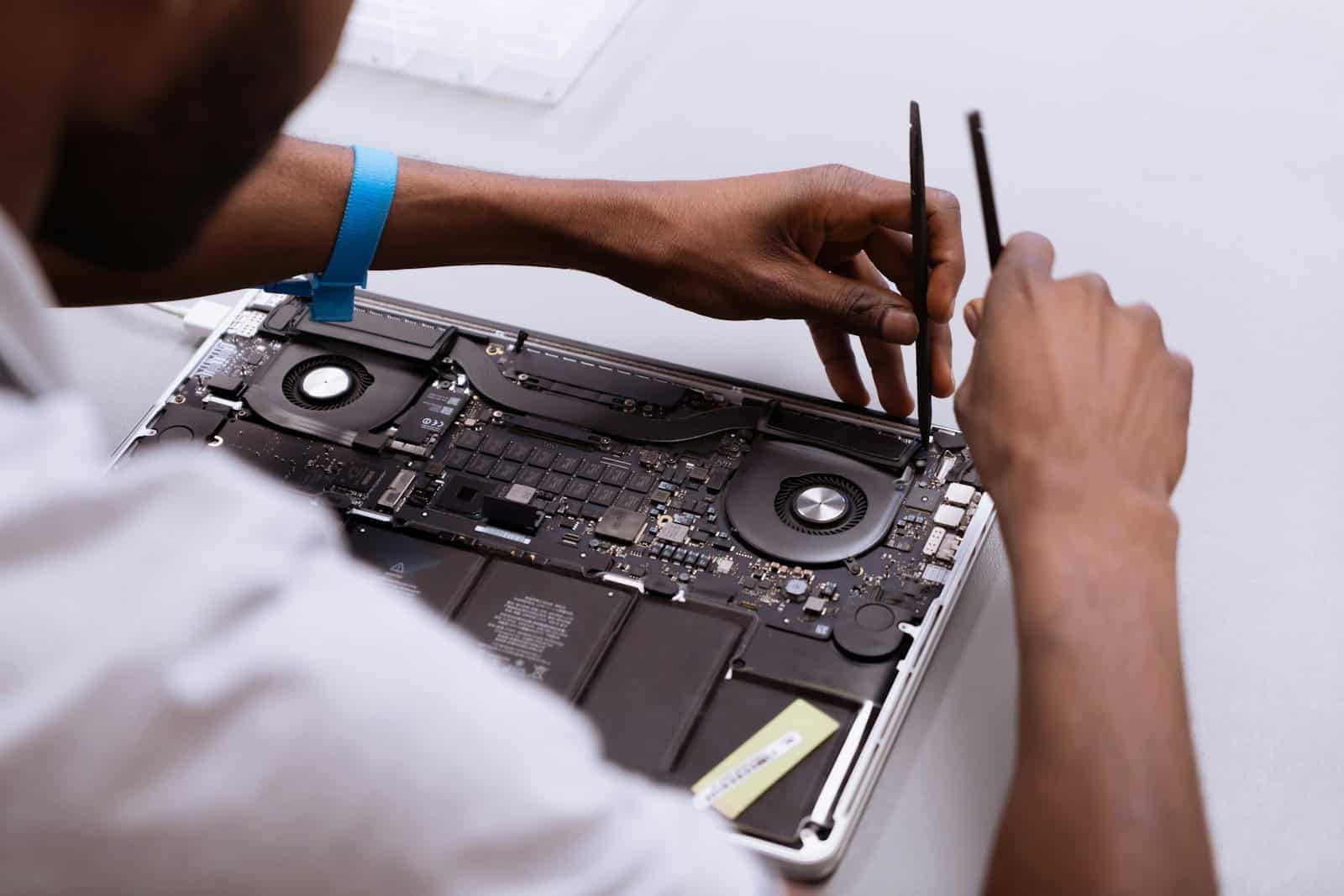Your MacBook’s battery is designed to last for years, but like all rechargeable batteries, it gradually loses capacity over time. If you’ve noticed your MacBook dying faster than usual, running hot, or giving unreliable battery readings, it may be time for a replacement.
This guide will show you how to check your battery health, identify warning signs, and decide when it’s time to replace your MacBook battery.
🔋 1. Check Your Battery Health in macOS
macOS includes built-in tools that make it easy to monitor battery condition.
Step 1: Use System Settings
- Click the Apple menu () in the top-left corner.
- Go to System Settings > Battery.
- Click Battery Health…
You’ll see a Battery Condition status:
- Normal – Your battery is working properly.
- Service Recommended – macOS has detected that the battery’s capacity is significantly degraded and should be replaced soon.
(source: How-To Geek)
⚙️ 2. Check Cycle Count and Capacity
Every MacBook battery is rated for a certain number of charge cycles—usually between 500 and 1,000 cycles, depending on the model. Once you exceed that, battery performance declines rapidly.
To check your cycle count:
- Hold Option and click the Apple menu ().
- Select System Information.
- In the sidebar, choose Power.
- Look for Cycle Count and Condition.
If your cycle count is near or above the rated limit (Apple lists these on its Battery Service page), it’s a strong indicator that a replacement is due.
(source: Coolblue)
⚠️ 3. Common Signs Your Battery Needs Replacement
Even if your MacBook doesn’t display a “Service Recommended” message, certain symptoms can signal that your battery is wearing out:
a. Rapid Power Drain
If your battery percentage drops quickly or your MacBook dies unexpectedly, the cells may no longer hold a charge effectively.
b. Overheating
A failing battery can overheat easily, especially during charging or heavy use.
c. Swelling or Warping
A swollen battery can cause your trackpad to bulge or your case to separate slightly. Stop using your MacBook immediately and have it inspected—this can be a safety hazard.
d. Slow Charging or Not Charging at All
If your MacBook charges inconsistently even with a good charger, the battery may be at fault.
e. Short Runtime
If you used to get 8–10 hours of battery life and now only get 2–3, it’s a clear sign of capacity loss.
(sources: iFixit, Apple Community)
🧠 4. When to Replace vs. When to Wait
- Replace immediately if:
- The battery is swollen or overheating.
- macOS says “Service Recommended.”
- You can’t get through your normal workday unplugged.
- Wait a bit longer if:
- Battery life is reduced but still usable.
- You mostly use your MacBook plugged in.
- The replacement cost isn’t justified for an older device.
💰 5. How to Replace Your MacBook Battery
You have three main options:
1. Apple Authorized Service
Apple or authorized providers can replace your battery safely using genuine parts.
- Typical cost: $129–$199 depending on model.
- Covered under AppleCare+ if within warranty.
2. DIY Replacement
If you’re comfortable with tools, you can buy a replacement kit from reputable sites like iFixit—they include step-by-step guides and all necessary tools.
3. Third-Party Repair Shops
These can be more affordable, but ensure they use high-quality batteries and offer a warranty.
🧰 6. Tips to Extend Battery Life After Replacement
Once you’ve replaced your battery, follow these best practices to keep it healthy longer:
- Avoid keeping your MacBook plugged in 24/7.
- Keep it between 20%–80% charge when possible.
- Avoid extreme heat or cold.
- Keep macOS updated for optimal battery management.
- Enable Optimized Battery Charging in System Settings.
✅ Final Thoughts
You’ll know it’s time to replace your MacBook battery when:
- macOS shows “Service Recommended,”
- your cycle count is near its limit, or
- your battery no longer lasts through your day.
Replacing your battery not only restores performance and portability—it also helps prevent potential damage from overheating or swelling.
If your MacBook is more than 3–5 years old, a new battery can make it feel like new again.
In summary:
Check your battery health, monitor cycle counts, watch for physical or performance issues, and replace the battery when it no longer meets your needs.






